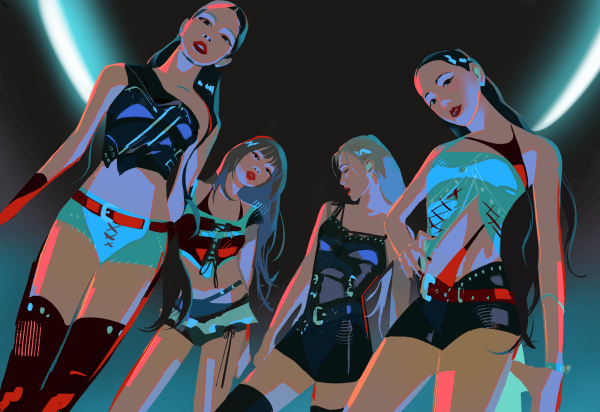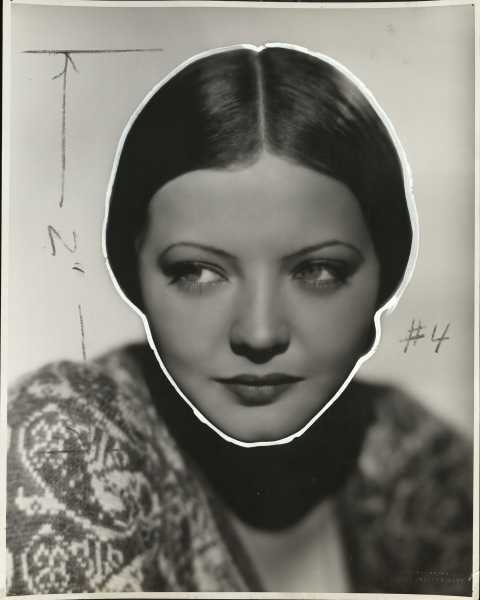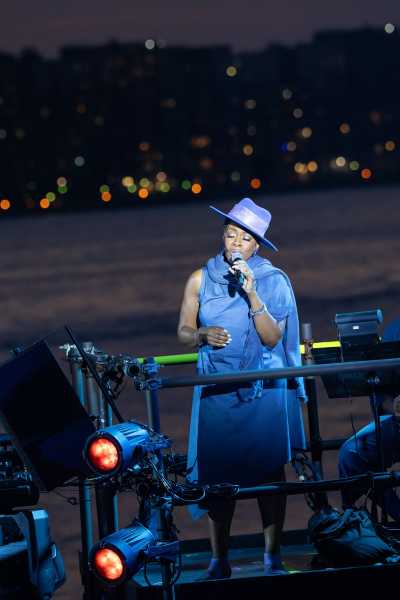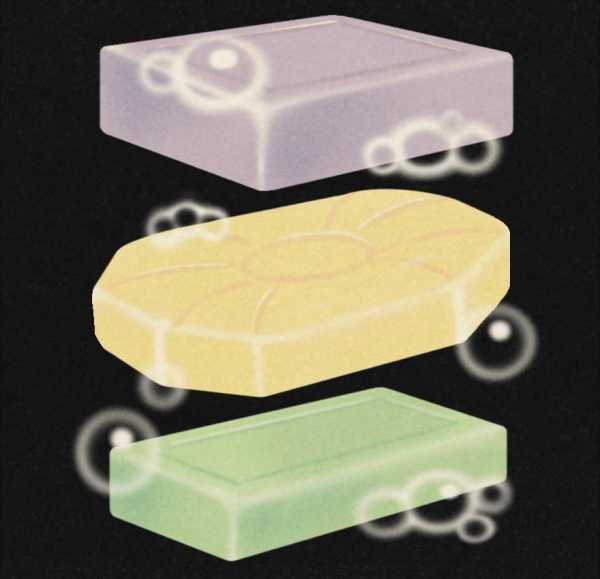
Save this storySave this storySave this storySave this storyYou’re reading the Goings On newsletter, a guide to what we’re watching, listening to, and doing this week. Sign up to receive it in your inbox.
In the mid-twenty-tens, the incandescent girl group Blackpink was, along with BTS, at the center of the K-pop revolution that finally popularized the genre in America, after nearly two decades of domination in its birthplace, South Korea. The K-pop model is built around entertainment agencies that turn teen-aged trainees into synchronized performance units via carefully choreographed songs, dance routines, and fashion styles, all echoing the youth movements in American pop, with the twist that it’s performed in both Korean and English. A relentless, non-stop promotion cycle turns performers from rookies to “idols,” drawing devoted fans who closely follow their every move and treat the music as gospel. One such agency, YG Entertainment, having built the pioneering girl group 2NE1, in the late two-thousands, used the prototype to build a supercharged version in Blackpink, in 2016, choosing members who reflect the Korean diaspora—Rosé is Korean, born in New Zealand; Jennie is Korean, raised in New Zealand; Lisa is Thai; and Jisoo is Korean. The group’s music—produced by YG’s K-pop rapper turned in-house producer Teddy Park—was decidedly more robust and pulled explicitly from hip-hop; the group’s tag line, “Blackpink in your area,” made clear its global ambitions.

Blackpink continues its reunion tour.Illustration by Marion Bordeyne
With pomp, circumstance, and a worldly intuition never previously displayed in K-pop, Blackpink exploded onto the scene as a singularly magnetic girl squad, as kitschy and flamboyant as it was sophisticated and practiced. Its biggest singles are possessed by a zany hyperactivity offset by blasé cool and spells of muted balladry, and its two records, “The Album” (2020) and “Born Pink” (2022), made it the most successful K-pop girl group ever. In the years since “Born Pink,” the members have internalized the guiding principles of Korean cultural expansion, setting aside group activities and embarking on solo adventures. Since December, 2024, each has made a solo début—Rosé with “Rosie,” Jennie with “Ruby,” Lisa with “Alter Ego,” and Jisoo with the EP “Amortage”—all featuring songs primarily in English, with the three albums breaking into the Billboard 200 top ten. Blackpink continues its long-anticipated reunion Deadline tour with two shows at Citi Field, July 26-27, navigating both group and solo stardom.—Sheldon Pearce

About Town
Flamenco
The ensemble Noche Flamenca, led by the remarkable flamenco dancer and choreographer Soledad Barrio and her choreographer husband Martín Santangelo, continues its explorations of the paintings and etchings of Francisco Goya, which often depict characters in deep distress, hemmed in by dark forces. Such themes are well suited to the emotionally explosive range of flamenco performance, with its keening voices and driving footwork. The vignettes in “Legacy of Our Dreams,” set to guitar, percussion, and voice, each delve into a theme, from the shame of forbidden love to social isolation to the abuse of the powerless—or, as Santangelo put it, “the not-so-pretty parts of life.”—Marina Harss (Joyce Theatre; July 29-Aug. 10.)
Classical
No matter how much you plan your wedding day, things can always go wrong. Maybe a count wants to sleep with your fiancée, your long-lost parents are revealed, or you disguise yourself as someone else. Another couple could even get married up there with you. In “Le Nozze di Figaro,” or “The Marriage of Figaro” for those less Romantically inclined, anything is possible. The opera company Teatro Grattacielo’s version of Mozart’s chaotic masterpiece, conducted by the Mexican pianist and conductor Abdiel Vázquez and directed by Stefanos Koroneos, plays with onstage lighting to highlight hidden motivations and desires. Who knows what may be found in the shadows.—Jane Bua (La Mama; July 25-27.)
Art

Sylvia Sidney, c. 1932. Photograph by Eugene Robert Richee / Courtesy MOMA
MOMA’s film department knows that the art and artifice of filmmaking have always thrived on publicity. To illustrate that point, “Face Value: Celebrity Press Photography,” a show of more than two hundred portraits from the department’s files, packs the galleries leading into the lower-level screening rooms with stars going back to film’s earliest days. Enlisting photographers (and professional flatterers) such as George Hurrell, Clarence Sinclair Bull, and Ernest A. Bachrach to make the photographs, the studios molded and maintained the images of everyone from Jean Harlow to Harry Belafonte by leaving nothing to chance. Most of the pictures here have been painted, trimmed, collaged, or otherwise ruthlessly edited. In a shot of Carlo Ponti and Sophia Loren head to head, he remains, smiling, while she’s x-ed out.—Vince Aletti (MOMA; through June 21, 2026.)
Alternative R. & B.
The London-based Nigerian singer Obongjayar has been steadily drifting toward his distinct sound. Initially discovered by XL Recordings head Richard Russell for a freestyle over the Kendrick Lamar song “u,” his musical evolution sent him spiralling in many different directions—Afrobeat, spoken word, electronic music, soul. A self-described “identity crisis” left him searching for something that more markedly represented him and his home. His début album, “Some Nights I Dream of Doors,” from 2022, manifested these many turns as one integrated style, generating polyrhythmic hymnals that felt hallowed and personal. Obongjayar’s new album, “Paradise Now,” takes a deeper dive into fluid self-expression, even revisiting hip-hop, only now on his terms.—Sheldon Pearce (Music Hall of Williamsburg; July 24.)
Off Off Broadway

Ayana George Jackson in “The Gospel at Colonus.”Photograph by Julieta Cervantes
Bob Telson and Lee Breuer’s stunning 1983 musical “The Gospel at Colonus”—Sophocles’ fifth-century passion play reimagined as a Black Pentecostal church service—returns, this time directed by Shayok Misha Chowdhury. Long-suffering Oedipus, played here by both the great baritone Davóne Tines and the blind jazz vocalist Frank Senior, comes at last to the place where he will die; the music converts his deathwatch into joy. This thrilling “gospel” makes its message out of twilight: a golden sky turns purple as the congregation, dressed in lavenders and mauves, dances; David Zinn’s set is a circle, red as the sinking sun. “Let every man consider his last day,” the chorus sings, as it turns the encroaching darkness into glory.—Helen Shaw (Little Island; through July 26.)
Movies
Reid Davenport’s documentary “Life After” is a passionate and revelatory fusion of investigative journalism, social analysis, and first-person exploration. He considers the case of Elizabeth Bouvia, a disabled woman who, in 1983, sought the right to assisted suicide, which was denied in court; in 1997, she appeared on “60 Minutes.” Finding no subsequent trace of her death—or of her life—Davenport pursues her story. His quest expands to consider efforts, in the United States and Canada, to legalize assisted suicide for disabled people, some of which he comes to see as political cover for denying them services—in effect, as cost-benefit euthanasia. In the process, Davenport, who is himself disabled (and deftly wields a camera from his wheelchair), gives voice to the intimate indignities of bureaucratic dependence and the fundamental prejudices and cruelties that it entails.—Richard Brody (Film Forum.)

On and Off the Avenue
Rachel Syme surveys the best bar soaps.

Illustration by Jiyung Lee
There are few indulgences I find more satisfying—particularly in the sweltering months—than a fresh block of upmarket bar soap. It is, in so many ways, the perfect splurge: solid and weighty in the hand, not exorbitant in cost, and, ultimately, able to justify its luxury through utility. Bar soap yearns to be used—and used up—rather than merely admired. For my money, the best-smelling, and most beautifully packaged, soap in the world (and I’ve tried too many to count) comes from the Parisian perfume house Oriza L. Legrand. The company wraps its soaps in creamy paper adorned with Art Nouveau designs, then tucks each one into an equally ornate, snug little box. My favorites of their offerings are Relique D’Amour ($18), with a scent that evokes the mossy stones of an old church, and Violettes du Czar ($18), which smells like chalky violet pastille candies. One area where bar soap certainly has shower gel beat is sloughing powers—if you are looking to shed a layer of dead skin for bare-arms season, pick up a Soft Services Green Banana Buffing Bar ($30), which smells like tart, unripe fruit and feels like velvety sandpaper. Want to bring some history into the bath? Try Caswell & Massey’s Marem soap ($14), an octagonal cake smelling of red currants and Crimean roses. The perfume house (one of America’s oldest) originally created the scent in 1914, for the actress Alla Nazimova, known for her impassioned Ibsen performances; onstage, she really whipped herself into a lather—you, blessedly, get to do it in the shower. Lastly, for that squeaky-clean sensation, I’ve been turning to the Los Poblanos Blue Corn Mint Bar ($12), made in my home state of New Mexico. It’s herbaceous, cooling, and zesty; summertime in a slab.

What to Watch
Summer is the time for blockbusters; our film critic Justin Chang picks some of the best.
1. The term “blockbuster bomb” was first coined, during the Second World War, to describe explosives used by the Royal Air Force; “blockbuster” didn’t become film-industry shorthand until 1943, a few years after “The Wizard of Oz” was released in late August, 1939. Even so, this M-G-M classic inspired by the L. Frank Baum novel, a justly beloved pillar of Hollywood’s Golden Age, has, through almost nine decades’ worth of repertory screenings, TV airings, and home-video reissues, earned its blockbuster standing and then some. Call it a blockbuster Baum.
2. Steven Spielberg’s “Jaws” (1975) put the concept of the blockbuster, as we know it now, in circulation: despite a troubled production, it became such an outsized phenomenon that it forever transformed the way Hollywood films are made, marketed, and released. It remains the archetypal summer movie; its lurking terrors, still peerless after all these years, are inextricable from the sun-drenched pleasures of the season.
3. Some might argue that “The Fly” (1986), a respectable but hardly record-breaking commercial success, is a blockbuster only by the typically low-grossing standards of the director, David Cronenberg. I say that the explosion of cinematic preconceptions and limitations is precisely what this brilliant, wrenching film—a seamless fusion of horror and romance, genre and art—is all about.

Keanu Reeves and Sandra Bullock in “Speed,” from 1994.Photograph from 20th Century Fox Film Corp. / Everett Collection
4. Sometimes, I’ll rewatch the tremendously suspenseful and moving sequence from Jan de Bont’s “Speed” (1994) in which a group of passengers make their terrifying escape, one by one, from a hurtling bomb-rigged bus—and feel, for a moment, that all is right with the world.
5. It isn’t just the demonic force of Heath Ledger’s performance as the Joker that makes “The Dark Knight” (2008) one of the pinnacles of Hollywood comic-book filmmaking. It’s the way the director Christopher Nolan absorbs that force into the very architecture of his filmmaking, as if he had found a way to bottle the essence of anarchy in dramatic form. It’s rare to see a consummate control freak embrace his inner chaos agent; the effect is pummelling, unnerving—and entirely thrilling.
P.S. Good stuff on the internet:
- It’s gas-station affogato season
- What it takes to work at Vogue in the nineties
- The case for an apartment ball pit
Sourse: newyorker.com